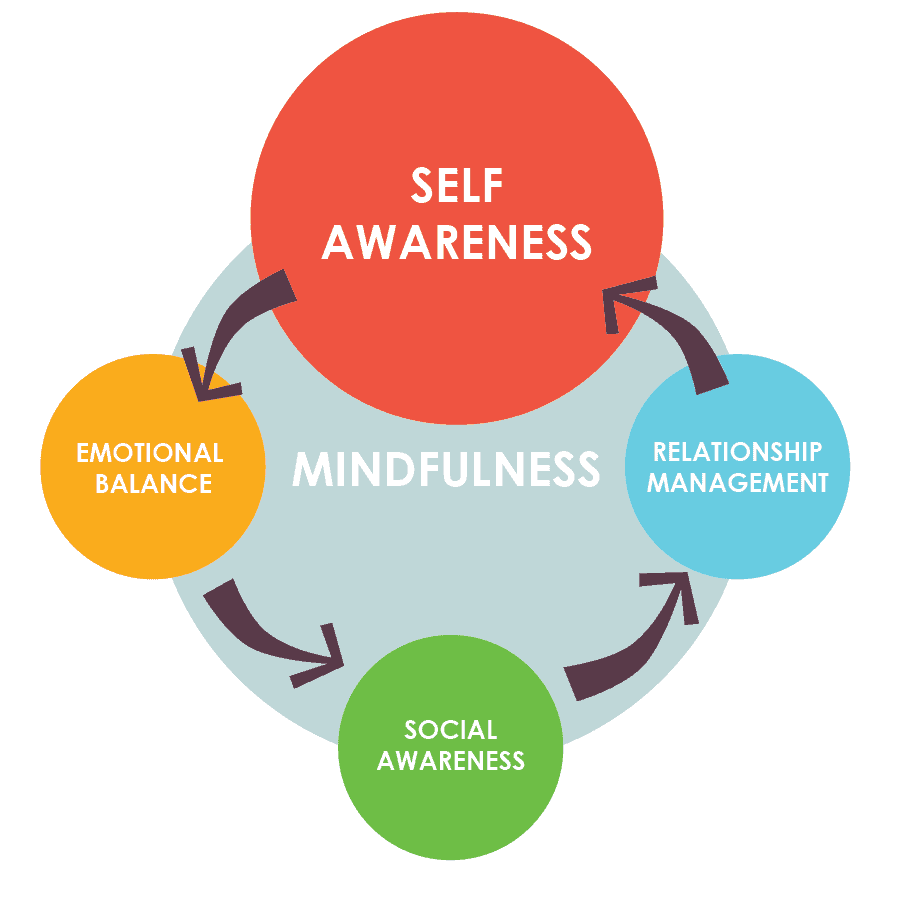
These three qualities are represented, respectively, by the width of the circles for each mental object, brightness of the fill color, and diameter of the ring of awareness that sits in the present moment of time. Variations in qualities of object orientation (engagement/disengagement), clarity, and aperture in experience are depicted. All modalities of experience enter awareness in OM meditation and mind wandering (MW). FA meditation focuses on only one mental/physical object in experience (somatic object is depicted here). Wider bands refer to difficulty disengaging from mental or sensory objects, greater projection into past or future experience, and a resulting smaller aperture. The more temporally extended awareness is in time, the more mental stickiness and disengagement delays are apparent. Width of the band represents the temporal focus of awareness. Awareness in the present moment is depicted by the blue band around mental objects arising and passing through time. Visual (V), auditory (A), and somatic (S) modalities of experience are depicted. Variations in awareness during meditation and mind-wandering rest.

Implications for future research are discussed.Īwareness meditation mind wandering mindfulness resting state. A neurophenomenological approach to probing modality-specific forms of concentration and nonconceptual awareness is presented that may improve our understanding of the resting state. In this article, we present a theoretical analysis and plausible neurocognitive framework of the restful mind, in which we attempt to clarify potentially adaptive contributions of both mind wandering and mindful awareness through the lens of the extant neurocognitive literature on intrinsic network activity, meditation, and emerging descriptions of stillness and nonduality. Instead of an inverse relationship between mindfulness and mind wandering, a more nuanced characterization of mindfulness may involve skillful toggling back and forth between conceptual and nonconceptual processes and networks supporting each state, to meet the contextually specified demands of the situation. Unfortunately, such distinctions fail to acknowledge similarities and interactions between the two states.

On the other hand, mindful awareness is frequently described as a focus on present sensory input without cognitive elaboration or emotional reactivity, and is associated with improved task performance and decreased stress-related symptomology. Spontaneous mind wandering is typically associated with self-reflective states that contribute to negative processing of the past, worrying/fantasizing about the future, and disruption of primary task performance. Mind wandering and mindfulness are often described as divergent mental states with opposing effects on cognitive performance and mental health.


 0 kommentar(er)
0 kommentar(er)
